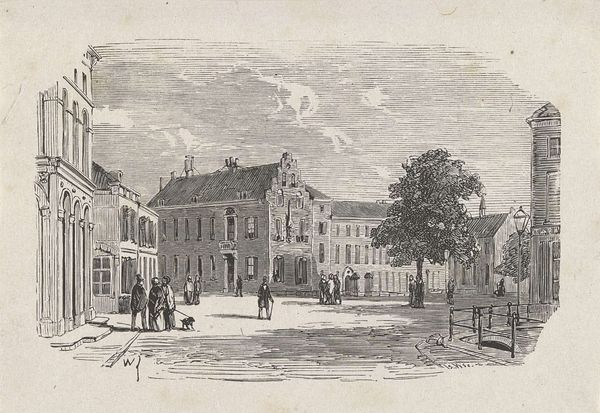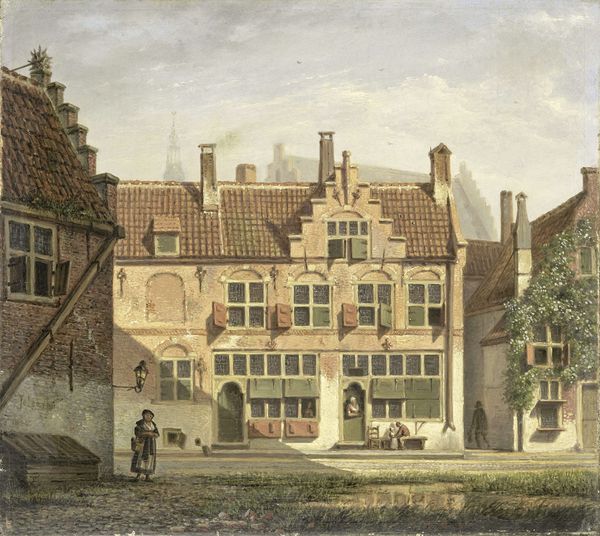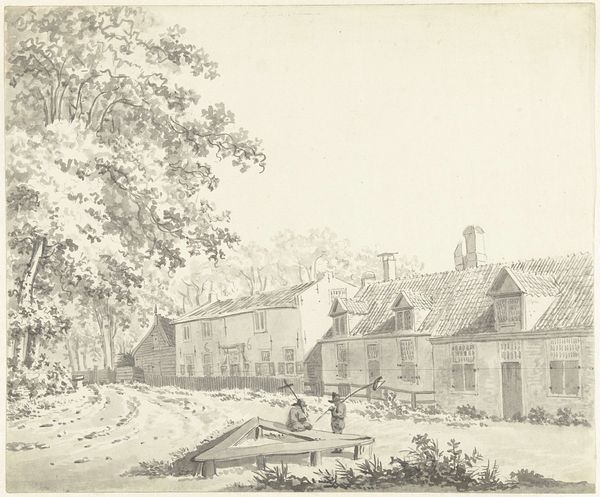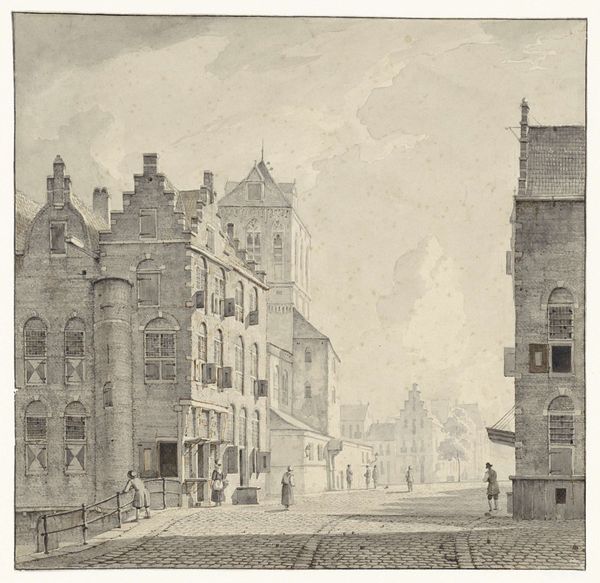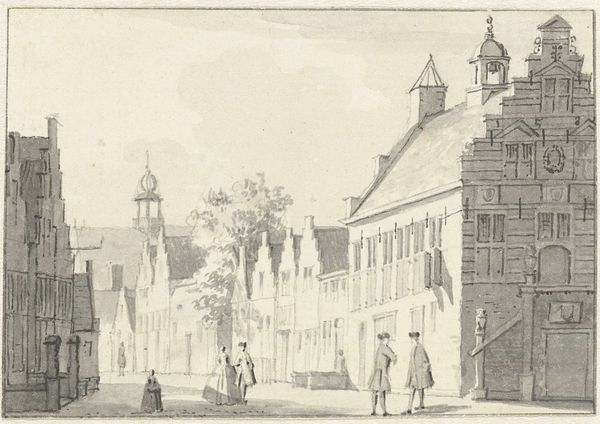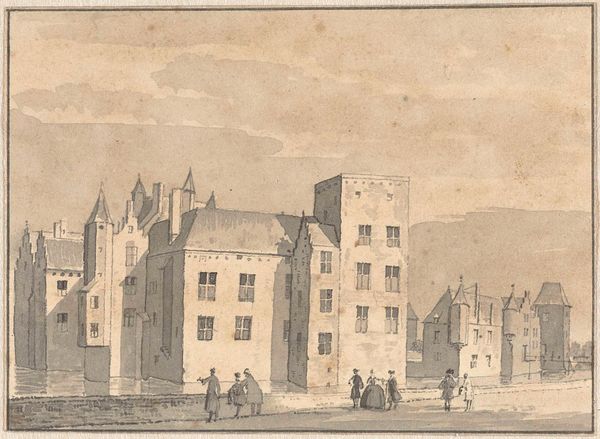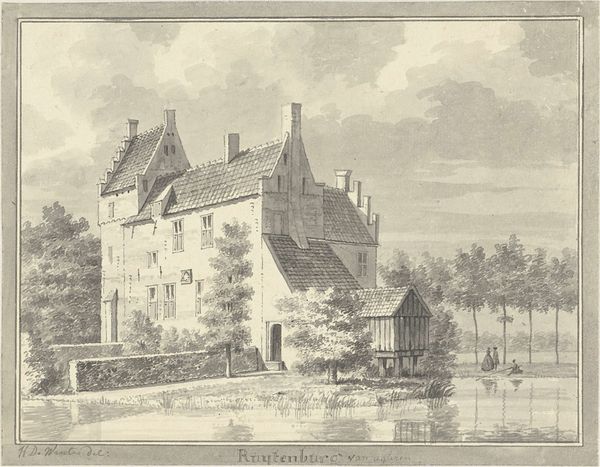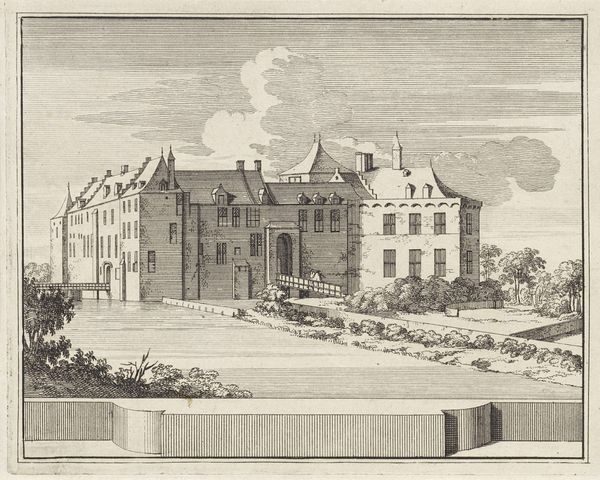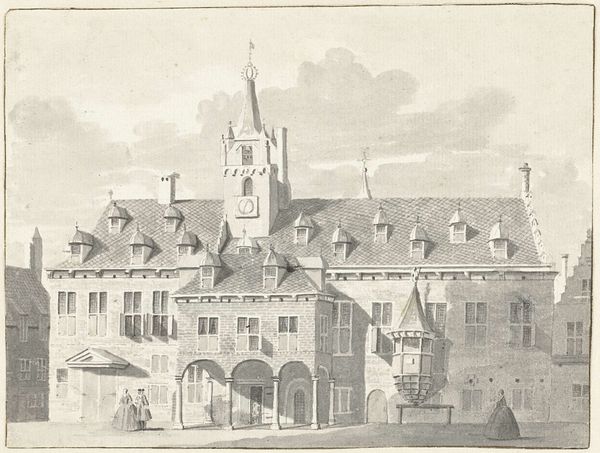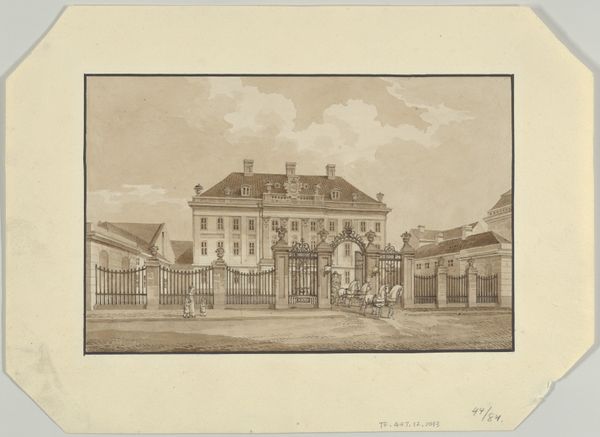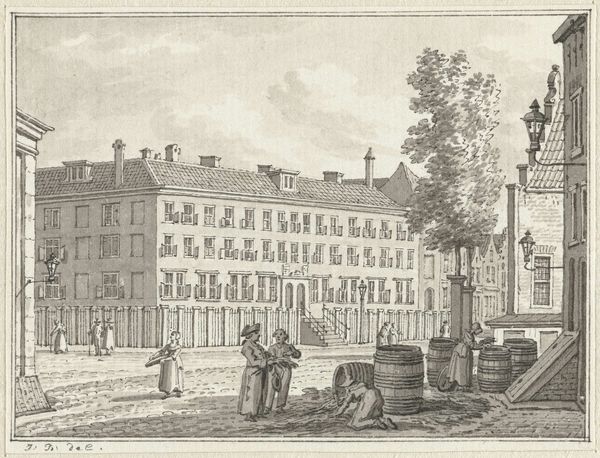
drawing, pencil, pen, architecture
#
drawing
#
neoclacissism
#
dutch-golden-age
#
pencil sketch
#
landscape
#
pencil
#
architectural drawing
#
pen
#
cityscape
#
architecture
Dimensions: height 262 mm, width 341 mm
Copyright: Rijks Museum: Open Domain
Curator: Looking at "Huizen te Amersfoort" created around 1825 by Johannes Jelgerhuis. It is a beautiful cityscape created using pen and pencil. What's your first reaction? Editor: It feels so still, doesn't it? The quiet, muted tones and careful linework lend it a certain serenity, despite being an urban scene. There's a distinct absence of vibrant life, replaced by an almost melancholic calmness. Curator: That stillness speaks to the social and economic conditions of Dutch cities during this period, especially after the Napoleonic wars. The Dutch Golden Age was long past, and there was an attempt to recapture a sense of order and classicism reflected in architecture and in art. Editor: Precisely! The Neoclassical influence is quite apparent in the architectural symmetry and detailing, aiming for stability and structure after a period of societal upheaval. You can see it in the neat, orderly windows and the relatively simple facade. It evokes a sense of control, perhaps masking deeper societal anxieties. Curator: Jelgerhuis’s meticulous rendering offers more than just a record of architectural features; it documents urban space. Think about who had access to this kind of space, who lived in those buildings, and whose stories remain untold in the drawing. Editor: Absolutely. The people included seem to belong to the middle class. What about those less privileged? The margins often tell more than the centre. It urges a closer examination of socio-economic stratification in these meticulously constructed spaces, a dialogue that incorporates issues of class and societal structures. It makes me think about the social function of art from that time and today! Curator: Well said! This work is more than a mere depiction of buildings; it’s an artefact shaped by its specific time. I encourage our listeners to explore Dutch history in the 19th century more broadly and to consider their social and historical circumstances that informed art and architecture during this era. Editor: And hopefully, to interrogate not only the historical context but also its relevance for how we build our own visual cultures today! How can it encourage us to analyze the power dynamics inherent in every space that's created around us.
Comments
No comments
Be the first to comment and join the conversation on the ultimate creative platform.
